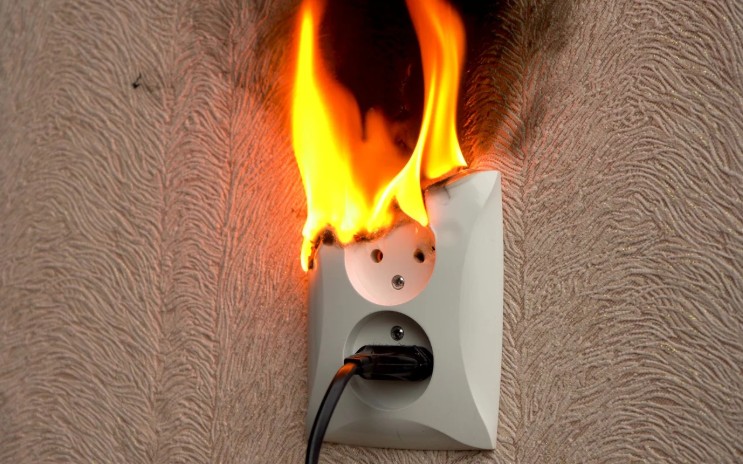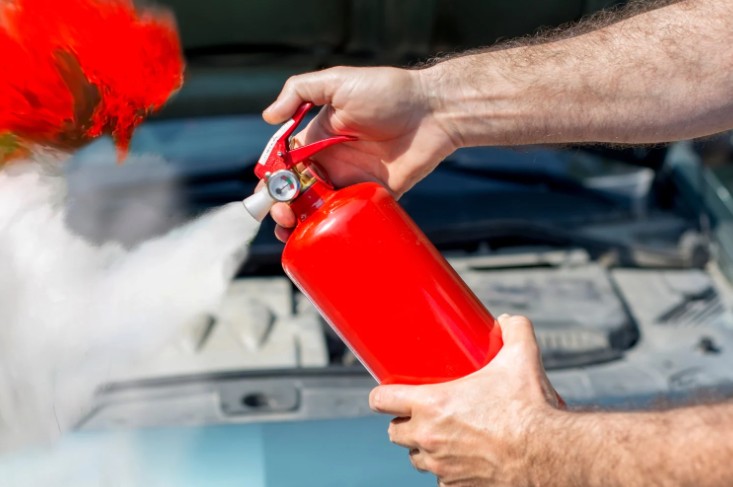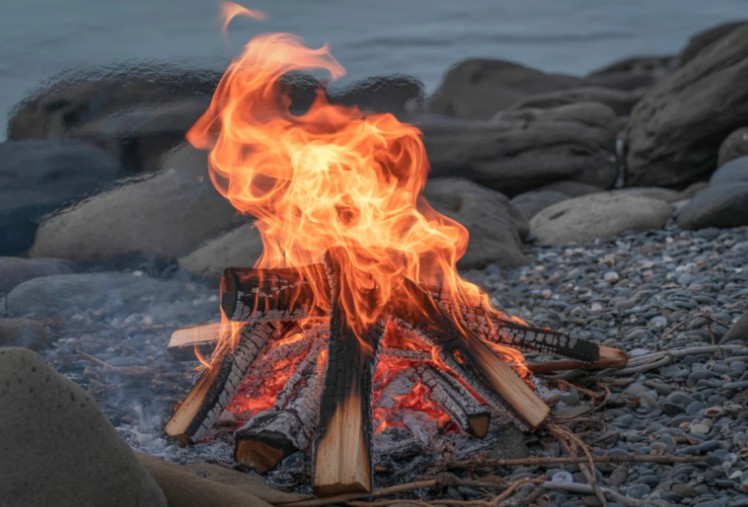Fires in the UK remain a serious risk, from homes to workplaces. Wondering what are the four ways which fire can spread?
Knowing how fire spreads can save lives, property, and time. In this article, I’ll explain the four ways fire can spread, why combustible materials catch fire through direct contact with flames, and the simple steps you can take to prevent disasters.
Why Combustible Materials Catch Fire Through Direct Contact with Flames?— And Why Understanding Fire Spread Matters
Most people know that fire burns — but few understand how it travels. Fire doesn’t move randomly; it spreads by four distinct methods. By understanding these, you’ll know how to:
- Identify and remove fire hazards in your home
- Install alarms and fire doors where they’ll be most effective
- Reduce the chances of small flames turning into large fires
And at the centre of it all is a simple fact:
Combustible materials catch fire through direct contact with flames.
This is the reason that candles near curtains, cigarettes on sofas, or heaters next to papers are so threatening. Let’s look at the four main ways fire can spread and how you can protect your home.

1. Conduction – How Fire Travels Through Solids
What is Conduction in Fire Spread?
Conduction is the transfer of heat through solid materials like metal, brick, or wood. A fire starting in one area can heat up pipes, metal frames, or walls, which then transfer heat to other areas, igniting new fires.
What Are the Common Household Conductors?
- Metal door handles and knobs
- Radiators and metal furniture
- Steel pipes and wiring
- Aluminium window frames
If combustible materials touch these hot surfaces, they may ignite even without visible flames.
2. Convection – Rising Heat and Smoke Movement
How Does Convection Spread Fire?
Convection occurs when hot gases rise, carrying flames and heat upward. This is why fires in houses quickly move upstairs or into loft spaces.
What Are the Risk Areas for Convection in Homes?
- Stairwells
- Roof voids and attics
- Ceiling voids and lift shafts
- Ventilation systems
Keeping internal doors shut and installing smoke alarms on each level can help slow this spread.
3. Radiation – Heat That Travels Through Air
What is Radiant Heat?
Radiation allows heat to travel through invisible waves, just like feeling warmth from a bonfire even at a distance. This means a fire can ignite items across a room without direct contact.

What Are the Examples included?
- Melting plastic bins
- Igniting curtains across a room
- Heating up nearby buildings during major fires
4. Direct Flame Contact – Immediate Ignition of Combustible Materials
How Does Direct Contact Ignite Fires?
This is the most obvious but most dangerous form of fire spread. Combustible materials catch fire through direct contact with flames.
Any flammable item — from paper to wood — can ignite within seconds of touching an open flame.
What Are the Examples in UK Homes?
- Curtains near candles or radiators
- Upholstered furniture close to heaters
- Bins filled with cardboard or paper
- Dry Christmas trees near open flames
Always keep flammable items at least one metre away from heat sources or open flames.
Comparison Table: 4 Fire Spread Methods
| Fire Spread Method | Description | Common Household Risk Examples |
| Conduction | Heat transfer through solids | Metal pipes, door frames, wiring |
| Convection | Hot gases rise and carry flames | Staircases, roof voids, ventilation ducts |
| Radiation | Heat travels through air as energy waves | Melting bins, igniting items across rooms |
| Direct Flame Contact | Flames directly ignite combustible materials | Curtains, paper, wooden furniture |
What Makes Fires Spread Faster in UK Homes?
Several everyday conditions can accelerate fire spread:
- Open doors or staircases (aiding convection)
- Lack of fire doors or smoke barriers
- Combustible materials near heat sources
- Poor ventilation design
- Cluttered lofts or garages
How Can You Reduce the Risk of Fire Spreading?
Taking these steps can significantly lower the chances of fire spreading in your home:
- Install and test smoke alarms regularly (required by UK law)
- Keep flammable items away from heat sources
- Close internal doors at night to slow convection and radiation
- Use fire-retardant curtains or furnishings
- Consider fire doors in high-risk areas (kitchen, stairwells)

Final Thoughts – Stay Fire-Safe at Home
Understanding the four ways fire can spread — conduction, convection, radiation, and direct flame contact — isn’t just interesting science. It’s vital knowledge that can help you prevent and control house fires.
By recognising that combustible materials catch fire through direct contact with flames, and by taking simple steps like closing doors and keeping flammable items away from heat, you’re already making your home safer.
Fire safety starts with awareness — and now you know how to stop flames before they spread.
What Are the FAQs About What Are the Four Ways Which Fire Can Spread?
1. How fast can fire spread through a home?
In less than five minutes, an entire room can be engulfed — especially if convection and radiation occur together.
2. Can fire travel through walls?
Yes — through conduction or convection if there are hidden air spaces.
3. What materials catch fire most easily?
Paper, untreated wood, fabrics, and plastics — these combustible materials catch fire through direct contact with flames or radiant heat.
4. What’s the difference between flammable and combustible?
Both burn, but flammable materials ignite at lower temperatures. Combustible materials take more heat but still ignite easily when flames touch them.

Leave a Reply